


Pt. II
© Malvin Artley
[Updated. See end.]
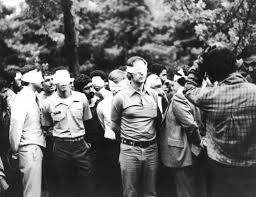 The reasons: Following on from our discussion of Iran, its history, society and people, we can now get a clearer view of what is taking place currently between the US and that ancient culture. There are currently many methods being employed by the US and the Saudis to try to isolate and bring Iran to heel. The think tanks in Washington have been busy. Among those we see economic sanctions, cyber warfare, threats to other nations in an attempt to end trade with Iran and attempts to destabilize Iran from inside using proxy forces. None of these are likely to have the desired effects, and we will examine why in due course. In addition, those efforts are likely to produce blowback for the nations involved in trying to sabotage Iran. So, the question is, why would the US, the Saudis and Israel want to see Iran marginalized? There are three main reasons:
The reasons: Following on from our discussion of Iran, its history, society and people, we can now get a clearer view of what is taking place currently between the US and that ancient culture. There are currently many methods being employed by the US and the Saudis to try to isolate and bring Iran to heel. The think tanks in Washington have been busy. Among those we see economic sanctions, cyber warfare, threats to other nations in an attempt to end trade with Iran and attempts to destabilize Iran from inside using proxy forces. None of these are likely to have the desired effects, and we will examine why in due course. In addition, those efforts are likely to produce blowback for the nations involved in trying to sabotage Iran. So, the question is, why would the US, the Saudis and Israel want to see Iran marginalized? There are three main reasons:
- The Iranians overthrew the US-backed regime of the Shah and kicked out American and other Western controlling interests in 1979. In addition, Iranian students took Americans hostage and the US then had to negotiate for their release. In short, the Iranians gave the US a black eye in 1979 and Washington has been out for vengeance ever since.
- Iran has called for regime change in Israel and the Gulf monarchies – really, an end to the monarchies and to Zionism – not an end to Israel, as we have been led to believe. The Shia clerics in Iran see both the monarchies and the Zionists as abominations.
- Iran sits at one of the most coveted strategic points in the world, and its oil and gas reserves are coveted as well. To win over Iran would mean a major disruption of China’s Belt and Road Initiative and the greater integration of Eurasia, thus ensuring the continued use of the dollar as the world reserve currency for the time being. It would also ensure the dominance of the Saudis in the region, raise the level of influence of Israel and supposedly ensure the survival of the current Israeli state.
Thus, we see that there is much at stake in Washington’s efforts to rein in Iran, including also the two other players just mentioned. Currently, the two main attack fronts on Iran are economic and the efforts at instigating internal instability using proxy forces inside Iran. The latter involve several minority groups, the most notable and visible of which is the MEK, so we will start our investigations with them.
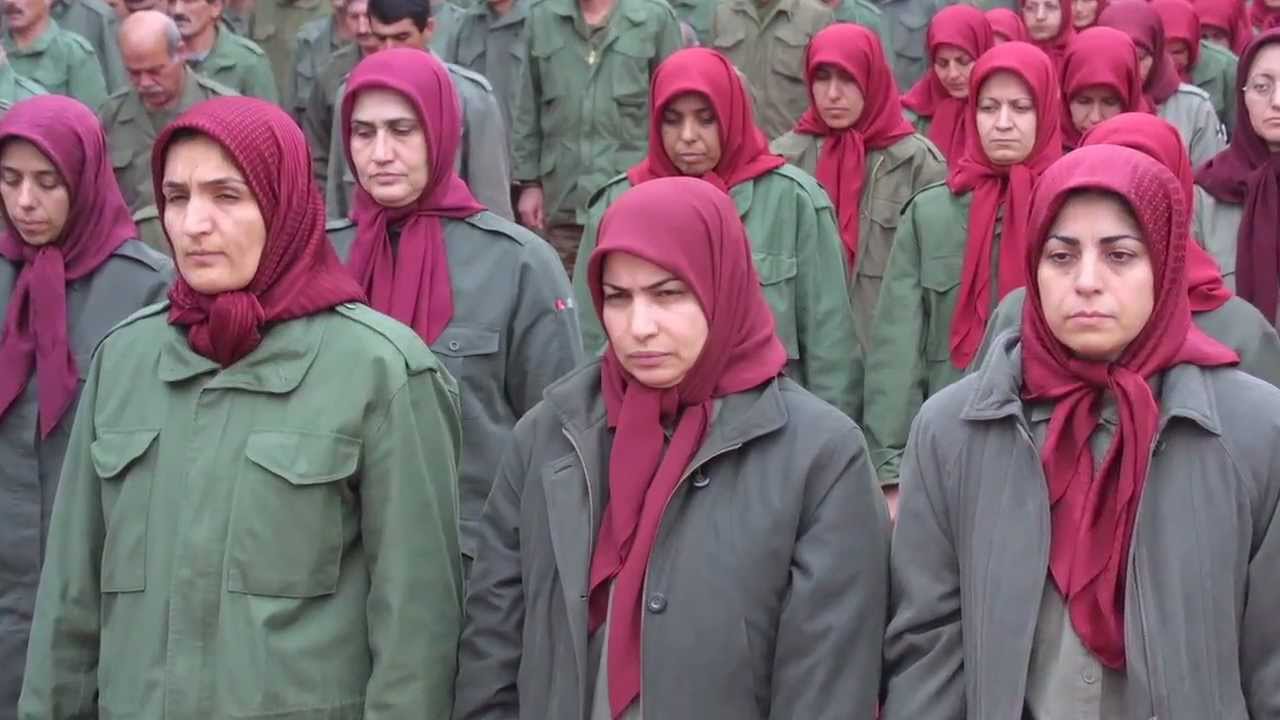 The MEK: If you want a good current example of irony and cynicism in American foreign policy, look no further than the MEK – the Mojahedin-e Khalq – or the People’s Mujahedin Organization of Iran. This is a terrorist organization, currently listed as such by Japan, Iraq and Abu Dhabi. Until 2012 it was listed as one by the US State Department, which now lists it as ‘an exiled Iranian resistance group’. It was delisted as a terrorist group at the direction of Hillary Clinton because of its supposed rejection of violence, although the group remains controversial. They were founded in 1965 by leftist students in Iran in opposition to the Shah’s rule. They helped to overthrow the Shah in 1979, but broke violently with the clerics after the revolution, and were exiled, thereafter settling in Iraq with the blessing and support of Saddam Hussein. In Iraq they helped to suppress Kurdish uprisings in the north and Shia unrest in the south. They then participated in the Iran-Iraq war on the side of the Iraqis, were used to infiltrate Iranian positions and give intelligence to the Iraqis and were utilized in a suicide attack on Iranian positions in ‘Operation Eternal Light’. Thousands of them were killed, and a large number of them were executed by Iranians after being captured. The Iranians see them as traitors, and they are reviled in Iran. A study of that operation will shed light on why employing internal forces to destabilize Iran will fail to work.
The MEK: If you want a good current example of irony and cynicism in American foreign policy, look no further than the MEK – the Mojahedin-e Khalq – or the People’s Mujahedin Organization of Iran. This is a terrorist organization, currently listed as such by Japan, Iraq and Abu Dhabi. Until 2012 it was listed as one by the US State Department, which now lists it as ‘an exiled Iranian resistance group’. It was delisted as a terrorist group at the direction of Hillary Clinton because of its supposed rejection of violence, although the group remains controversial. They were founded in 1965 by leftist students in Iran in opposition to the Shah’s rule. They helped to overthrow the Shah in 1979, but broke violently with the clerics after the revolution, and were exiled, thereafter settling in Iraq with the blessing and support of Saddam Hussein. In Iraq they helped to suppress Kurdish uprisings in the north and Shia unrest in the south. They then participated in the Iran-Iraq war on the side of the Iraqis, were used to infiltrate Iranian positions and give intelligence to the Iraqis and were utilized in a suicide attack on Iranian positions in ‘Operation Eternal Light’. Thousands of them were killed, and a large number of them were executed by Iranians after being captured. The Iranians see them as traitors, and they are reviled in Iran. A study of that operation will shed light on why employing internal forces to destabilize Iran will fail to work.
After the 2003 invasion of Iraq, the American-backed government exiled the MEK from Iraq and the bulk of them finally settled in Albania in 2016. They are not on good terms with the locals in Albania. To ingratiate themselves there they have groomed Albanian politicians, officials and mafia heads to support them. The group also likewise has a lobby in Washington that grooms members of the US Congress and prominent officials for support, both in the past and presently, among them John McCain, Howard Dean, Rudy Giuliani, Bob Menendez, Judy Chu and Dana Rohrabacher. Now, they are the newest ‘freedom fighters’ in the US efforts against Iran. At a recent MEK rally in Albania, current National Security Advisor, John Bolton, told an enthusiastic crowd of MEK members that they would be celebrating in Tehran before 2019. Given what we know about Iran, he should probably not hold his breath. Such a pronouncement betrays a great ignorance of Iranian society on the part of the Washington establishment.
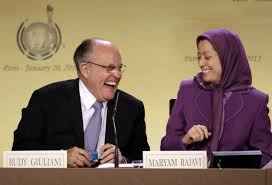 US support for the MEK is a ‘marriage of convenience’, the idea that ‘the enemy of my enemy is my friend’. It is the same sort of ploy that was used to start the war in Syria and the 2014 Ukrainian coup – using an extremist group to foment violence against a government that is not otherwise friendly to one’s interests. This type of tactic was discussed in the Russia article, under the section on Crimea. The use of the MEK against Iran is a red herring that at best will go nowhere, and at worst will backfire and cause the MEK to be relisted as a terrorist organization by the US and the EU, with all that implies. We won’t go into why, but the following points might give an indication.
US support for the MEK is a ‘marriage of convenience’, the idea that ‘the enemy of my enemy is my friend’. It is the same sort of ploy that was used to start the war in Syria and the 2014 Ukrainian coup – using an extremist group to foment violence against a government that is not otherwise friendly to one’s interests. This type of tactic was discussed in the Russia article, under the section on Crimea. The use of the MEK against Iran is a red herring that at best will go nowhere, and at worst will backfire and cause the MEK to be relisted as a terrorist organization by the US and the EU, with all that implies. We won’t go into why, but the following points might give an indication.
The MEK has advocated violent overthrow of the Iranian government from the start. It has also resorted to terrorist tactics – bombings, assassinations, human rights abuses and so forth – to further its aims. It killed Americans in Iran in the 1970s, was involved in the hostage crisis after the Iranian revolution, and has plotted attacks in other nations, including a FIFA world cup tournament, to name a few things. The organization has variously been classed as ‘a bunch of nut jobs’, a cult, a cult of personality, as Marxist, as feminist (many of its leaders are women) and so forth. It behaves much like a cult. Scholars describe it as having “authoritarian and charismatic leadership, psychological manipulation, intense ideological exploitation and isolation, sexual control, emotional isolation, degrading peer pressure, deceptive recruitments, forced labor, sleep deprivation, physical abuse, and lack of exit options within the group as cultic tendencies.” (from the linked Wiki article) The MEK describes itself as a democratic organization that espouses free market economic models and so forth, but this is propaganda to endear it to the West, from all appearances.
So, with all the preceding about the MEK in mind, this is the group that Washington wants to see take the reins of power in the Iranian government, or to at least use them to topple the Iranian government. But, this is probably the one group in Iran that is universally condemned. And with the Basij being as strong as it is in Iran, do we really see any hope of ‘celebrating in Tehran’ by the end of this year? More to the point, do we really want to see the government toppled in Iran at all, given what that would mean for the region if there is a violent overthrow? That brings us next to the two other nations in the mix – Israel and the Saudis – and why they have such a beef with Iran.
An overview of the Israelis and Saudis: The reasons for talk of war or even limited strikes against Iran have been lobbied for in Washington by Israel and the Saudis for some years now, but those calls have intensified since the war in Syria is drawing to a close. It was hoped by them and the neocons in Washington that the fall of Assad in Syria would facilitate the isolation and eventual fall of the theocracy in Iran. The reasons for their lobbying efforts are stated as follows:
"Both Saudi Arabia and Israel know they cannot defeat Iran and its proxies without the active participation of the United States. That would require shaping the “threat” narrative to start with a series of relatively minor military actions that appear defensive or non-controversial to draw the United States in without really appearing to do so. American involvement would be against Washington’s own interests in the region but it would serve Saudi and Israeli objectives, particularly if the situation is inherently unstable and is allowed to escalate. Both the Saudis and, more particularly, the Israelis have powerful lobbies in Washington that will push a friendly Congress for increased U.S. involvement and the Iranophobic mainstream media is likely to be similarly positive in helping to shape the arguments for American engagement."
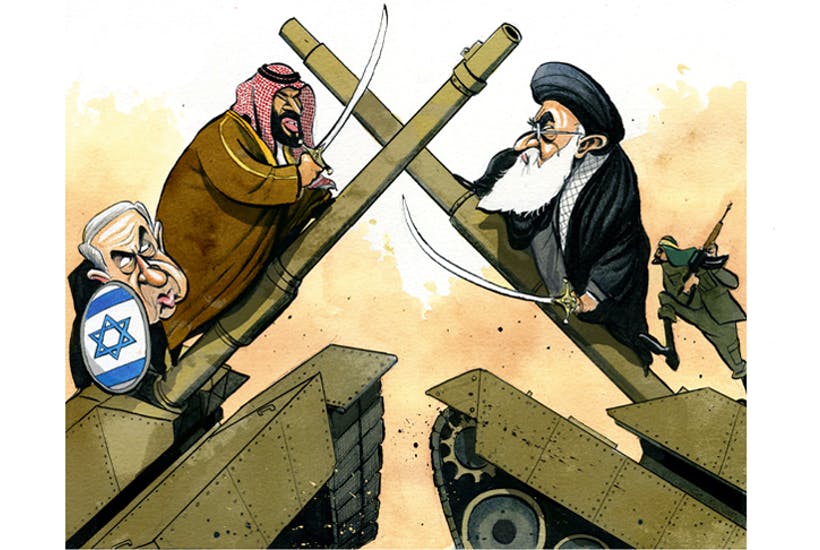 As a result of the war in Syria, Iran is increasingly becoming a strong regional power, in direct competition with Saudi Arabia and it supports rebel forces who defy Israel, namely Hamas and Hezbollah. But, given the records of the Israelis and Saudis and their dealings in the region, it might pay us to ask some serious questions. Do we really want to attack Iran to satisfy the desires of those two nations? One of them is a theocratic dictatorship (an absolute monarchy) and the other is an apartheid state, neither of which conform to our ‘democratic values’ and both of whom have terrible human rights records. Both of them also have too much influence in the foreign affairs of the US. Iran is threatening no one. It has threatened Israel in the past – or so we are told – but Israel has done so in kind to Iran. Saudi Arabia and Israel have both supported terrorist organizations in their efforts to overthrow Assad in Syria – the same terrorist organizations that we are supposed to be fighting in the ‘War on Terror’. These are the same terrorist organizations that formed the core of Daesh, with their shining human rights records, gassing, torturing and killing of civilians in Syria and Iraq. Why do we support these two nations? Does this not seem counterproductive at the very least? Does it not appear to be hypocritical?. And for what purpose? Cheap oil? Control of resources and shipping routes? And at what human cost? We’ll start with Israel, our chief ally in the Middle East.
As a result of the war in Syria, Iran is increasingly becoming a strong regional power, in direct competition with Saudi Arabia and it supports rebel forces who defy Israel, namely Hamas and Hezbollah. But, given the records of the Israelis and Saudis and their dealings in the region, it might pay us to ask some serious questions. Do we really want to attack Iran to satisfy the desires of those two nations? One of them is a theocratic dictatorship (an absolute monarchy) and the other is an apartheid state, neither of which conform to our ‘democratic values’ and both of whom have terrible human rights records. Both of them also have too much influence in the foreign affairs of the US. Iran is threatening no one. It has threatened Israel in the past – or so we are told – but Israel has done so in kind to Iran. Saudi Arabia and Israel have both supported terrorist organizations in their efforts to overthrow Assad in Syria – the same terrorist organizations that we are supposed to be fighting in the ‘War on Terror’. These are the same terrorist organizations that formed the core of Daesh, with their shining human rights records, gassing, torturing and killing of civilians in Syria and Iraq. Why do we support these two nations? Does this not seem counterproductive at the very least? Does it not appear to be hypocritical?. And for what purpose? Cheap oil? Control of resources and shipping routes? And at what human cost? We’ll start with Israel, our chief ally in the Middle East.
Israel and the propaganda: We constantly hear that Iran wants to “wipe Israel off the face of the map/earth”. Is that really true, though? The answer may surprise you. The quoted words are said to be directly out of the mouth of then-president of Iran, Mahmoud Ahmadinejad. The Western media and hawks in Washington and Israel seized on those words and endlessly repeated them, even to this day, as the reason to see Iran as a threat and that it needs to be stopped from its ‘aggressive actions’ and ‘expansionist tendencies’. The truth about Iran wanting to wipe Israel off the face of the map is a little different from what we hear, though. The quote was actually a mis-translation – a rather unfortunate, if not deliberate one – of a speech by Ahmadinejad where he repeated the recent words he heard of the Ayatollah Khomeini regarding certain regimes in the world, which included also Iraq, the Shah and the USSR. The Iranian news agency in so doing handed a golden propaganda meme to Iran’s enemies on the proverbial silver platter. What Ahmadinejad actually said was as follows, in Farsi:
“Imam ghoft een rezhim-e ishghalgar-e qods bayad az safheh-ye ruzgar mahv shavad.”
The literal translation of that to English (adjusting for English syntax) is:
“Khomeini said this regime occupying Jerusalem must vanish from the page of time.”
That’s a little different from saying Israel must be wiped from the face of the earth, or the map. In fact, what Ahmadinejad actually said (from the linked article) was that the regime in Israel, meaning the Zionists,
“…is the West’s apparatus of political oppression against Muslims. He says the “Zionist regime” was imposed on the Islamic world as a strategic bridgehead to ensure domination of the region and its assets. Palestine, he insists, is the frontline of the Islamic world’s struggle with American hegemony, and its fate will have repercussions for the entire Middle East.”
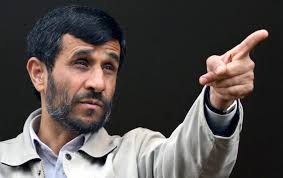 He was correct, even though the truth about the creation of Israel is hardly known at all in the US, or even through much of the West. There is no mention in his speech of ‘wiping from the face of the earth’, ‘map’ or even Israel. What he more or less explicitly echoed from Khomeini was that eventually the Zionist regime in Israel, represented presently by Netanyahu, would eventually disappear, of necessity. So, because of a poor translation, void of any fact-checking by journalists, irresponsible journalism that keeps parroting the same mistranslation with slight variations and reinforced by powerful lobbies in Washington, we are led to believe that Iran is a threat to world peace, even to the extent of being a threat to Europe and the US mainland with her ballistic missiles, as well as being the main sponsor of terrorism in the world. And this being a nation that currently threatens no one and has toned down its revolutionary rhetoric in recent years considerably.
He was correct, even though the truth about the creation of Israel is hardly known at all in the US, or even through much of the West. There is no mention in his speech of ‘wiping from the face of the earth’, ‘map’ or even Israel. What he more or less explicitly echoed from Khomeini was that eventually the Zionist regime in Israel, represented presently by Netanyahu, would eventually disappear, of necessity. So, because of a poor translation, void of any fact-checking by journalists, irresponsible journalism that keeps parroting the same mistranslation with slight variations and reinforced by powerful lobbies in Washington, we are led to believe that Iran is a threat to world peace, even to the extent of being a threat to Europe and the US mainland with her ballistic missiles, as well as being the main sponsor of terrorism in the world. And this being a nation that currently threatens no one and has toned down its revolutionary rhetoric in recent years considerably.
Trump recently sent out a cryptic tweet saying he wanted nothing less than world peace via the sanctions against Iran, all the while initiating economic and psychological warfare against them and for the wider region as a result, including Europe. But, this also goes in step with his move of recognizing Jerusalem as the capital of Israel, along with a soon-to-be-revealed ‘ultimate deal’ for the resolution of the ‘Palestinian problem’ – which is caused more by Israel more so than the Palestinians – and Israel’s nation-state law. What we see emerging is a potent set-up for the ‘end times’, for which millions of US Christian evangelicals, most of whom are Trump supporters, yearn and watch. It is not difficult to imagine a time in the not-too-distant future when Israelis find themselves confined as a nation, confused, with civil unrest and at odds with all of its neighbors, not to mention the rest of the world as a result of the foregoing points. The Muslims in the region are increasingly suspicious of such an ‘ultimate deal’ and are leaning more and more to the East and Russia in their dealings.
Khomeini was actually quite prescient in his assertions, and it has nothing to do with ‘Iranian aggression’. In fact, Iran would not really have to do anything to see the end of the Zionists in Israel. That regime is already setting up the scenario for its own destruction. Israel is not viewed favorably by much of the world. That does not mean the destruction of Israel, though. Just what is the unfolding scene with regard to the Israeli regime then?
- Israel is a state sponsor of terrorism. It supports Daesh in the campaign against Assad in Syria and the MEK against Iran, among others. (here, here, here, here, here and here)
- The Zionists had no intention of abiding by the 1947 Palestine Partition Plan, witness by their ongoing illegal seizure of Palestinian land and erecting Israeli settlements on those lands. The Basic Laws of Israel (it has no written constitution) leave open a lot of room for interpretation with regard to such matters.
- Israel has seized land from other nations to which it has no right, most notably the Golan Heights, which from 2014 Israel claims as its sovereign territory (see Basic Laws). The Syrians will eventually seek to reclaim that land, as it is their territory by international law.
- By enacting their Nation-State Law, Israel has declared the Palestinians to be second-class citizens and Jerusalem as the ‘complete and unified’ capital of Israel, in abrogation of international law.
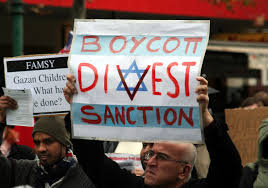 There are growing calls for justice for the Palestinians in the international community. The only nation in the world that consistently sides with Israel in the UN Security Council is the US, the latter vetoing any measure submitted by other member states that would disadvantage Israel.
There are growing calls for justice for the Palestinians in the international community. The only nation in the world that consistently sides with Israel in the UN Security Council is the US, the latter vetoing any measure submitted by other member states that would disadvantage Israel.
The above points give indication of a growing impatience with and opposition toward Israel in the international community, to the extent that the UN General Assembly and Human Rights Council have roundly condemned Israel on several occasions for its treatment of the Palestinians. Then, there are these additional points:
- Hezbollah in Lebanon has gained valuable battle experience in the Syrian theater and the 2006 Lebanon War. The organization has over 150,000 rockets that are deployed as defense against Israel, which would cause serious disruption to Israeli society if military actions got out of hand in the region. Hezbollah is backed by Iran and is a Shia militia.
- Syria has recovered its territory in the south of Syria up to the Golan Heights. It wants the Heights returned to it. It is quite likely that if military actions against Iran eventuated and Hezbollah became involved that Syria would move into the Golan, thus cutting off or compromising a main source of water for Israel. Water is one of Israel’s biggest potential weaknesses.
- There would be the possibility, in the same scenario, of Palestinian uprisings in the West Bank and Gaza, which would further disrupt Israeli society
- If infrastructure in Israel is hit hard in a conflict it would cripple the country. Israel is actually quite vulnerable in key aspects of its infrastructure
- Israel is also quite sensitive to policy and public opinion in the United States, its single biggest supporter. If relations were to sour public opinion in the US due to Israeli missteps Israel would find itself largely isolated. Americans on the whole do not want another war.
The preceding five points are the strategic reasons why we are unlikely to see a conflict with Iran, especially since the Syrian conflict has failed to dislodge Assad. Israel now has two forces on its borders with fresh battle experience – Syria and Hezbollah. Any plans at further expansion of Israeli territory have been thwarted, at least for the moment. The truth be known, all this talk about Iran from the US and Israel is in the nature of bluster and manipulation, rather than being of any substance. What the US, Saudi Arabia and Israel really seek in Iran is regime change. But that is unlikely to happen, or if it does, not to their liking. What, then, does Saudi Arabia seek in all this?
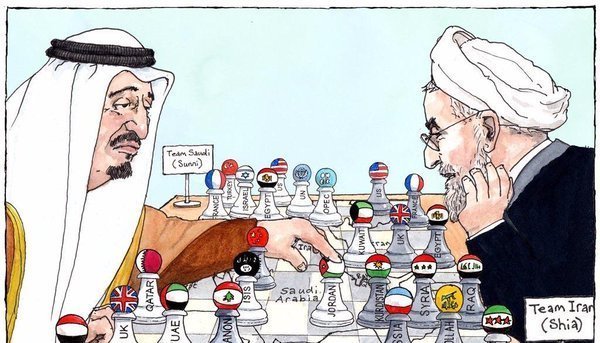 What is the Saudi’s beef with Iran? The Saudis have long had a rivalry with Iran. There are many reasons for this. One that is most frequently focused upon is the Shia-Sunni religious rivalry, but that has been largely politicized rather than being a reality. It is, in fact, an aftereffect rather than a cause. The main drivers for conflict in the Middle East are geopolitical rather than religious, but the ‘religion card’ is played prominently in Western media narratives to cover up for the shenanigans of political and economic interests. The main reason for the Saudi-Iranian rivalry is a struggle for regional dominance. At this point, the Saudis are on the back foot. The Saudis see threats at every turn as they seek to maintain their dominance in the region. It is one of the main reasons their defense spending is so inordinately high. There are several points to keep in mind, especially in the current historical vein, and there are a couple of videos that go into some depth about it (here and here):
What is the Saudi’s beef with Iran? The Saudis have long had a rivalry with Iran. There are many reasons for this. One that is most frequently focused upon is the Shia-Sunni religious rivalry, but that has been largely politicized rather than being a reality. It is, in fact, an aftereffect rather than a cause. The main drivers for conflict in the Middle East are geopolitical rather than religious, but the ‘religion card’ is played prominently in Western media narratives to cover up for the shenanigans of political and economic interests. The main reason for the Saudi-Iranian rivalry is a struggle for regional dominance. At this point, the Saudis are on the back foot. The Saudis see threats at every turn as they seek to maintain their dominance in the region. It is one of the main reasons their defense spending is so inordinately high. There are several points to keep in mind, especially in the current historical vein, and there are a couple of videos that go into some depth about it (here and here):
- Since 1974 the Saudis have been tied to the US dollar and as such have had primary control over the region’s oil trade. They also have control over the value of the US dollar. That has rapidly started to shift with the world beginning to move from oil to natural gas as an energy source, Russia’s increasing influence in the region and the effects of the recent Arab Spring uprisings. Iran sits on one of the world’s largest natural gas fields, and this is shared with Qatar, with whom the Saudis are also currently at odds.
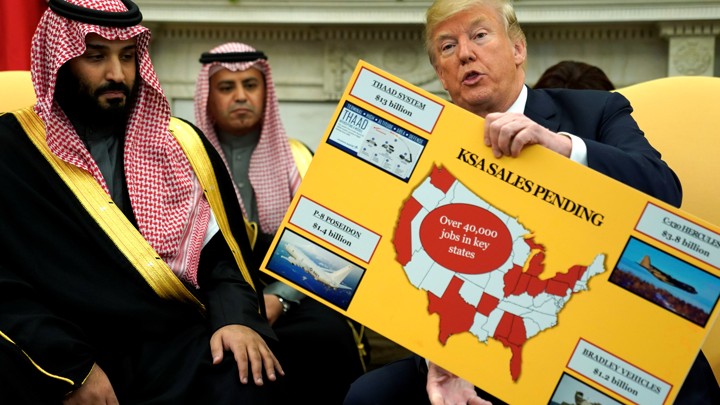 We need to stop right there for a moment. There are many people who feel that Israel is the main driver of US policy in the Middle East. But in fact, it is the Saudis who drive Washington policy in the region. That is because the US dollar is propped up by Saudi oil rather than gold now. It is not simply a fiat currency. And the biggest threat to the Saudis’ pride of place in US foreign policy is the current de-dollarization that is taking place primarily between China, Russia and Iran. Continuing:
We need to stop right there for a moment. There are many people who feel that Israel is the main driver of US policy in the Middle East. But in fact, it is the Saudis who drive Washington policy in the region. That is because the US dollar is propped up by Saudi oil rather than gold now. It is not simply a fiat currency. And the biggest threat to the Saudis’ pride of place in US foreign policy is the current de-dollarization that is taking place primarily between China, Russia and Iran. Continuing:
- The Saudis lost a key ally in the region with the toppling of Saddam Hussein in the Iraq War. Iran has moved into Iraq to partially fill the vacuum left by Saddam’s ousting. Iraq has a Shia majority population in the south, where most of its oil is located.
- Iran, with its more secular government (i.e., it is not a monarchy) sits as an example to the other Gulf States of what can happen when monarchies are overthrown. This is not often stated as a cause for tensions. Khomeini called the Gulf’s monarchies unjust, and that they must be toppled. But, it is internal pressures rather than external forces that will cause their eventual fall.
- The Arab Spring uprisings, starting in 2011, have fragmented the once solid Sunni alliances, and Iran has taken advantage of the power vacuums left by that unrest to solidify its position in the region.
- There is now an emerging Turkish-Iranian alliance, with increasingly friendly relations between those nations, which further weakens Saudi influence.
- The war in Yemen, a senseless, illegal and cruel conflict, is a large drain on the Saudi economy and weakens its standing in the international community. It has created the worst humanitarian disaster in recent history. It also weakens traditional ties with other majority Islamic states, who watch the ongoing conflict there askance. And, there is no Iranian influence in that conflict. In fact, Iranian advances of aid to the rebel factions there have been rejected by the Yemenis.
- The biggest enemy of Saudi Arabia is its own foreign policy, which should be aimed more at diplomacy rather than belligerence.
- And then, there is growing internal unrest within the Saudi Kingdom, especially among the Shia minority.
What war with Iran would mean: Given all the tensions in the idle East now and the anti-Iranian sentiments in the Beltway, we might want to stop for a moment here and consider what military strikes – even limited strikes – against Iran would mean. To start, Iran is quite a large country, It is also a fortress, for anyone thinking of invading, surrounded on three sides by large mountain ranges and on the fourth side by the Persian Gulf. To completely subdue Iran would require a large invasion force and the logistics would be formidable. It is doubtful that airstrikes alone would do the job, short of nuclear strikes. Consider the following comparison:
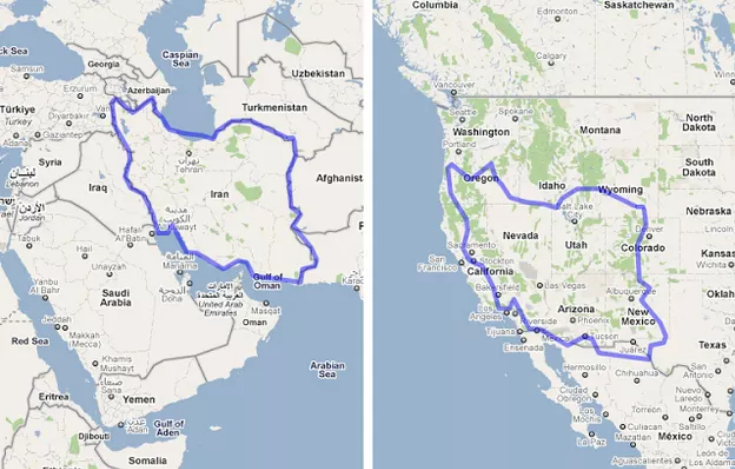
Further, Iran has a population of 82 million people, a population that on the whole is opposed to Washington’s policies and who hate Trump, whose military is battle-hardened via the Syrian War and the Iran-Iraq War, has a modern, well-equipped military, is part of the Axis of Resistance, is across the Persian Gulf from Saudi Arabia, and has strong proxy forces throughout the region. Iran is also linked to Russia via the Caspian Sea, with Russia having a strong naval presence there – and that naval presence has missiles that can reach Poland, Greece and the entirety of the Arabian peninsula, were Russia to become involved militarily. Russia has also supplied Iran with some of its more advanced antiaircraft missile systems. Iran has solid relations with Russia and China. The Syrian Army is also allied with Iran and would cause quite a bit of trouble for Israel in the event of a wholesale attack on Iran. Russia would have a great interest in keeping Iran intact, as would China. Public opinion about Iran in Iraq is mixed, but generally there is a strong relationship, so Iraq could be a problem for attacking forces, too. Iran is seen especially favorably in the Shia communities in Iraq, and the main oil fields in Iraq are in the Shia section of Iraq. Are we beginning to get a picture?
From what is generally stated in various blogs and opinion pieces, probably the first thing that would happen in the event of an attack on Iran would be the closure of the Strait of Hormuz, shutting off 20% of the world’s oil supplies and spiking the price of oil. It would spell economic disaster for many economies worldwide. But, there is something else to consider, and it goes to why the US has been trying to shut down Iran’s production of ballistic missiles. Those missiles are not aimed at Europe, as we have been told in the past. Instead, they are aimed at Saudi Arabia, especially Riyadh and the Saudi oil fields, as well as American bases in the region. In the event of an attack on Iran, those missiles would be launched, destroying the Saudis’ oil production facilities, as well as those in other allied countries. There would be no need to close the Strait of Hormuz. It would indeed be, as Rouhani stated the matter, “the mother of all wars”, as it would cripple Saudi Arabia, disrupt oil production and shipments for months at least, and probably push Europe, Japan and China into the arms of Russia for energy supplies, thus completing de-dollarization in Asia and Europe, in all likelihood.
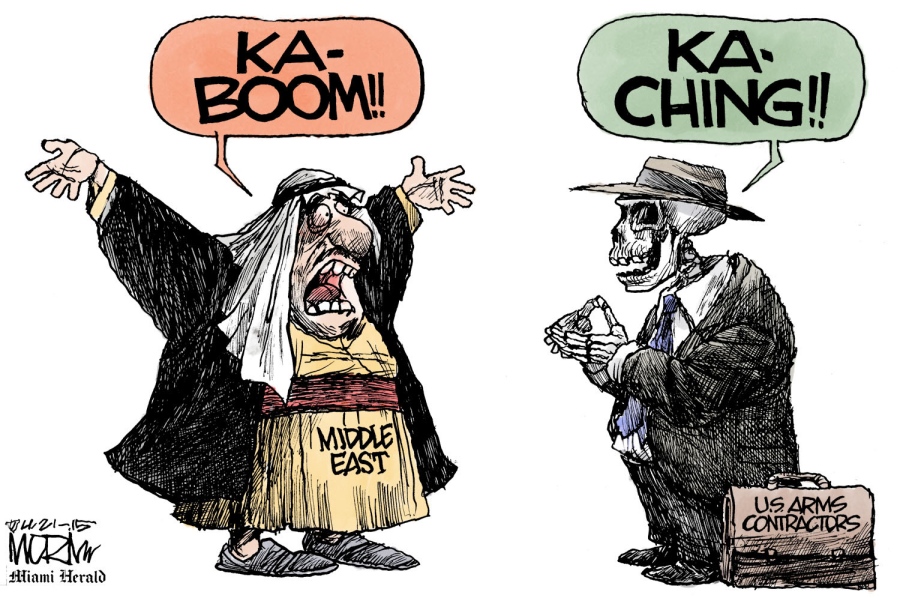 Such a move would benefit the US oil industry, would hurt China for a time, but would also hurt the most vulnerable consumers worldwide, especially in Europe if it took place in winter, and so forth. The US would probably destroy most of Iran’s important infrastructure within weeks with air power alone, without Russian or Chinese intervention. In that sense, the US would win the battle, but in the long term, would lose the war. The Iranians have military and nuclear infrastructure deep within tunnels in the mountains. To effectively clear those would mean having to invade. An invasion of Iran would begin one of the most terrible guerilla wars in history. It would have to go house-to-house, confronting a young, highly idealistic, and motivated population by the invading forces, in rugged mountainous terrain, with a rapidly-formed civilian militia by the Basij numbering many millions of people, probably. The Basij receive basic military training when they join that organization. In addition, that militia would probably be backed by Russia and China via the Caspian Sea. Plus, there are missiles hidden in the mountains along the Persian Gulf, many of which are mobile, and which would shut down shipping through the Strait, probably for months. Those would have to be dislodged by troops as well. Not being a military expert, these are the points I have been able to surmise from numerous more knowledgeable sources, like the one just linked, for example. But to hear some pundits say it, a military intervention would be ‘a walk in the park’ – just like Iraq, Vietnam and Afghanistan. We’ll think on that one for a while.
Such a move would benefit the US oil industry, would hurt China for a time, but would also hurt the most vulnerable consumers worldwide, especially in Europe if it took place in winter, and so forth. The US would probably destroy most of Iran’s important infrastructure within weeks with air power alone, without Russian or Chinese intervention. In that sense, the US would win the battle, but in the long term, would lose the war. The Iranians have military and nuclear infrastructure deep within tunnels in the mountains. To effectively clear those would mean having to invade. An invasion of Iran would begin one of the most terrible guerilla wars in history. It would have to go house-to-house, confronting a young, highly idealistic, and motivated population by the invading forces, in rugged mountainous terrain, with a rapidly-formed civilian militia by the Basij numbering many millions of people, probably. The Basij receive basic military training when they join that organization. In addition, that militia would probably be backed by Russia and China via the Caspian Sea. Plus, there are missiles hidden in the mountains along the Persian Gulf, many of which are mobile, and which would shut down shipping through the Strait, probably for months. Those would have to be dislodged by troops as well. Not being a military expert, these are the points I have been able to surmise from numerous more knowledgeable sources, like the one just linked, for example. But to hear some pundits say it, a military intervention would be ‘a walk in the park’ – just like Iraq, Vietnam and Afghanistan. We’ll think on that one for a while.
Of course, a military intervention would be a bonanza for the arms industries in the West. And the neocons in Washington think they have Iran right where they want them now. But, to borrow a sentence, and from what I have been able to see thus far, the Iranians would rather eat desert scrub than capitulate to Washington – in other words, never. So, a bombing campaign – while it might destroy the Iranian infrastructure – would have the effect of poking a stick in a hornet’s nest. It would destroy the nest, but then there are thousands of angry hornets looking for the perpetrator. And hornets can sting more than once. With a world economy in tatters, with angry Shia Muslims looking for vengeance anywhere against the West, with probably another refugee crisis in Europe, with Israel and the Saudis endangered if not under direct attack, what would the US, the Saudis and Israelis have won with such a fandango? And then, the eyes of the international community would be turned to the US, clamoring for a stop to the bloodshed. Iran would be seen to be the victim. Russia, Venezuela and the US would have to make up the oil shortfall. Such an intervention would be to Russia’s advantage. When the point was made earlier that the US would not win the war, the preceding probabilities outline why. The military experts in the Pentagon know all of these things. They are the only ones in Washington who advise against a military confrontation with Iran, hence Mattis’ denial that there were war plans for this month against Iran.
Lastly, if an attack on Iran had happened a few years ago, even, the results may not have been so catastrophic for the Middle East. Syria was in ruins, about to fall at any moment. Russia was not yet involved there. The Middle East could well have become balkanized and under the control of the US, Israel and the Saudis. That was then. Now the situation is quite different. The efforts at toppling Assad have failed. Syria and Iran are close allies, and Syrian troops have gained valuable military experience through their civil war. And, Syria wants the Golan Heights back from Israel at some point. It is Syrian territory, after all. Russia has gained a solid foothold in the Middle East and is increasingly seen as a reliable partner, having stepped into the power vacuum that the US is leaving in the wake of its incursions there. Russia and Iran have a solid alliance now, with trade deals, defense deals and friendlier relations than they have had for years, and with those ties only set to deepen. China is doing likewise with Iran, and they have had growing military ties since the 1980s. China is also looking to increase its uptake of Iranian oil in defiance of US sanctions. India already pays for Iranian oil in rupees, sidestepping US sanctions. In the long term, US sanctions will probably only have the effect of increasingly causing nations to seek other avenues of payment other than the US dollar, further weakening the leverage Washington has had for decades over the internal affairs of nations worldwide.
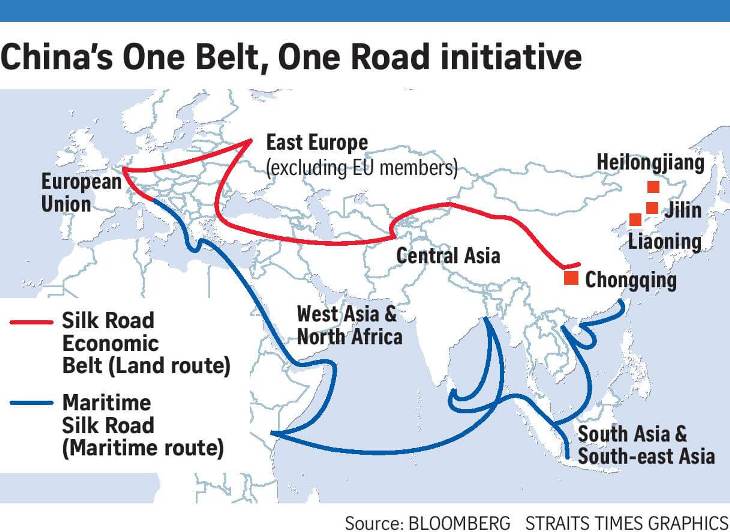 However, Iran is not the ultimate enemy. The final goal is the subduing of China, and what we see now with Trump’s recent trips abroad and summits is an effort to split Russia away from China, and also at the same time to destabilize Iran. Iran is the ‘big prize’ needed to disrupt the Belt and Road initiative of China and a greater Eurasian economic union. This is why we see the current fiery rhetoric out of Washington against Iran, the attempts to mobilize the MEK terrorist group to effect violent regime change there and the attempts to cripple the economy of Iran with the withering sanctions regime. The US has been trying this for 40 years without success, ever since the Iranian Revolution of 1979, and then through the Washington-backed Iran-Iraq War, which killed an estimated one million Iranians alone.
However, Iran is not the ultimate enemy. The final goal is the subduing of China, and what we see now with Trump’s recent trips abroad and summits is an effort to split Russia away from China, and also at the same time to destabilize Iran. Iran is the ‘big prize’ needed to disrupt the Belt and Road initiative of China and a greater Eurasian economic union. This is why we see the current fiery rhetoric out of Washington against Iran, the attempts to mobilize the MEK terrorist group to effect violent regime change there and the attempts to cripple the economy of Iran with the withering sanctions regime. The US has been trying this for 40 years without success, ever since the Iranian Revolution of 1979, and then through the Washington-backed Iran-Iraq War, which killed an estimated one million Iranians alone.
The emerging realities: Donald Trump has painted himself in a corner, allowing himself to be misguided by the Saudis, Israelis, pro-Israel oligarchs and neocons into walking out of the JCPOA and seeking to destabilize Iran. Sanctions will not work. Iran has taken controls off of its rial, allowing the market to determine its value in other currencies. It will probably shortly de-dollarize completely. It also has ways to circumvent the US sanctions, even if the Europeans completely cave in. The efforts at regime change will fail because of the failure of the strategists in Washington to take cultural considerations into account and without reliable intelligence on the ground. The idea of regime change is based upon our Western values and fails to take the Asian and Islamic mindset into consideration. There appears to be no curiosity about the cultures in these foreign interventions. This is the biggest reason why the US has failed so miserably in Iraq and Afghanistan, and why the conflicts continue to drag on with no visible signs of progress or a way out. Imagine how that would turn out in a country like Iran. And, all Iran needs to do at present is to keep tensions up in the Persian Gulf sufficient to limit shipping and to keep suppliers nervous enough for long enough without a full scale conflict for there to be considerable pressure on Washington to make peace with Iran. The Iranians are far more patient than Washington and have too much to lose if they capitulate. History will bear this out. I see nothing in Iran’s astrology that indicates a change in government in the next few years. I do, however, see a determined sense of independence.
History will also probably record the abrogation of the JCPOA by the Trump administration as one of its greatest blunders, at least from the standpoint of the elites in Washington and Europe who wanted to see a globalized world order with dollar dominance. One of the Obama administration’s key purposes of the JCPOA in the first place was to keep Iran in the fold of the petro-dollar. Then there was what was called a ‘secret plot’ by opponents of the plan to give Iran millions of dollars, which could otherwise be seen as a sweetener to keep Iran on board. Stopping the spread of nuclear weapons was sold as the way to keep Iran in place, but if we look at the timing of the JCPOA (2015), it came just two years after China announced the Belt and Road Initiative (2013). Iran had announced its plans to enrich uranium in 1996. Sanctions were first imposed on Iran for its nuclear activities in 2006. Negotiations for the JCPOA began in 2013. Even in 2006, then, sanctions failed to curb Iran in its nuclear ambitions. It was only in 2013 that they came to the table and began to hash out an agreement. At the least, there were two sides to the agreement – one according to the public, nuclear side, and a more secret side which related to finance. The former is shown in the implementation chart, with Uranus (technology) conjunct the descendant (contracts), square to Pluto (nuclear energy), which squares the horizon. The latter is shown in the creation chart. With the JCPOA, the Obama administration had to acknowledge the limits of America’s power, and that infuriates the hawks and many conservatives in Washington.
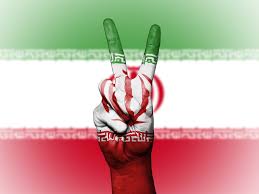 Conclusion: To end this piece, then, are we likely to see a conflict with Iran? Probably not. Not even air strikes. If there were to be a major escalation, the tipoff[1] would be the movement of carrier battle groups into the region, like into the Red Sea, the Persian Gulf, the Mediterranean and the Indian Ocean. We do not see that at the moment. It would take at least a few weeks to have everything in place, so it looks like Mattis was right. And in fact, it appears that Washington – at least for the moment – has even backed off of the regime change idea. This also fits with the solar minimum we have now. However, we will see tense relations for a time. There may be the odd skirmish here and there. The thing of interest to watch will be oil prices. If the cost of gasoline at the pump goes up considerably before November, then we may well see some very concerned people in Washington and growing calls to pull back on sanctions or to make peace with the Iranians. That would be preceded by some pretty fiery outbursts from the Beltway, though. The other thing that will be of great interest to watch will be how the Iranians handle this and if they choose to go full-on into the SCO. We can probably expect Iran to come out of this stronger than before, not to mention China and Russia in the long term, with the Saudis and the Israelis weaker and with some pretty angry voters in the US and Europe. As always, we meditate for peace in the region as we slowly watch a new world emerge before us.
Conclusion: To end this piece, then, are we likely to see a conflict with Iran? Probably not. Not even air strikes. If there were to be a major escalation, the tipoff[1] would be the movement of carrier battle groups into the region, like into the Red Sea, the Persian Gulf, the Mediterranean and the Indian Ocean. We do not see that at the moment. It would take at least a few weeks to have everything in place, so it looks like Mattis was right. And in fact, it appears that Washington – at least for the moment – has even backed off of the regime change idea. This also fits with the solar minimum we have now. However, we will see tense relations for a time. There may be the odd skirmish here and there. The thing of interest to watch will be oil prices. If the cost of gasoline at the pump goes up considerably before November, then we may well see some very concerned people in Washington and growing calls to pull back on sanctions or to make peace with the Iranians. That would be preceded by some pretty fiery outbursts from the Beltway, though. The other thing that will be of great interest to watch will be how the Iranians handle this and if they choose to go full-on into the SCO. We can probably expect Iran to come out of this stronger than before, not to mention China and Russia in the long term, with the Saudis and the Israelis weaker and with some pretty angry voters in the US and Europe. As always, we meditate for peace in the region as we slowly watch a new world emerge before us.
Update, as of 29 Aug 18: Since the original posting of this article, a couple of significant factors have come to light which may indeed signal a conflict with Iran. The first and most significant item is that Syria and Iran have just signed a mutual defense pact. This was indicated by a solar arc of Jupiter to the Syrian Mars (military in general) and the following transits: Mars trine Syria’s Saturn (the latter ruling partnerships for Syria), north node to Syria’s Pluto (a karmic link and the common destiny of large groups of people), and Jupiter sesquisquare to Syria’s Midheaven (the former representing the military for Syria). The Iranian Defense Minister Hatami visited Damascus a couple of days ago in order to sign that agreement. Citing the linked article:
“No details have been provided about the document’s content but it’s logical to surmise it contains a list of mutual obligations in the event that the Iranian military is attacked in Syria…The deal mentions Iran’s role in the reconstruction of Syria’s defense industry, thus ending any hopes that its military presence in that country will end. According to the Iranian defense chief, the ‘defense and technical agreement’ provides for the continued ‘presence and participation’ of Iran in Syria. He added that an agreement had been reached with Syria that Iran would have ‘presence, participation, and assistance’ in the reconstruction and that ‘no third party will be influential in this issue.’”
That last sentence means not even Russia, but it is specially pointed at Israel and Western powers. However, it also complicates the situation in Syria for all foreign powers there. Thus, the die has been cast. Israel has no hope now of Iran leaving Syria, short of Syria’s destruction, which is unlikely. It also means that an open corridor remains between Iran and Lebanon for resupply of Hezbollah, if or as needed.
This agreement follows upon a buildup in the Mediterranean and elsewhere of both American and Russian naval forces, the former possibly presaging a forecast false flag chemical attack in the Idlib province in the coming days. Large scale military operations by the Syrian Arab Army (SAA) – Syria’s national army – to clear the rebel enclave there are due to commence on or shortly after Sep 7, the very day Saturn turns direct opposite the US Venus (the sitting administration, and the US military, Venus ruling both those houses – 10th and 6th, resp). John Bolton has essentially broadcast to the world that such an attack will take place, saying that if one does take place, then the US would respond with very strong force. It is an open invitation for opposition groups in Syria to stage such an attack. The Syrian government has no need to do so. It is also the opposition’s last hope for any sort of US intervention in Syria. On Sep 7 there is also a transiting sesquisquare of Jupiter to the US Venus, showing a hint of optimism, but the entire configuration augers an upset for the US. In the Syrian chart there is a solar arc of the Syrian Saturn/Uranus conjunction aspecting their Midheaven, indicating a possible provocation and on the whole making terrific demands on the strength of the state. That natal conjunction is very telling with regard to Syria, and speaks to the tenacity of the government and its ability to overcome obstacles, which it has done.
Lastly, there was an obscure piece that appeared in the news, with Iranian claims that they had taken control of the Strait of Hormuz, which was promptly denied by Mike Pompeo. That would certainly escalate into an international incident if Iran acted to close the Strait. There has been a spike in the solar geomagnetic activity in recent days, the highest seen in about a year, although the sunspot numbers are close to nil. The rhetoric has certainly become heated in the past days, so watch for what happens in Syria in the coming weeks, because now it would almost certainly involve Iran. The midterms in the US are coming quickly, and Trump has been told he will be a wartime president. Again, we meditate for peace to prevail.
Picture credits:
[1] Starting at 16:00, but the entire video is revealing on many points.